Thai-Style Embroidery
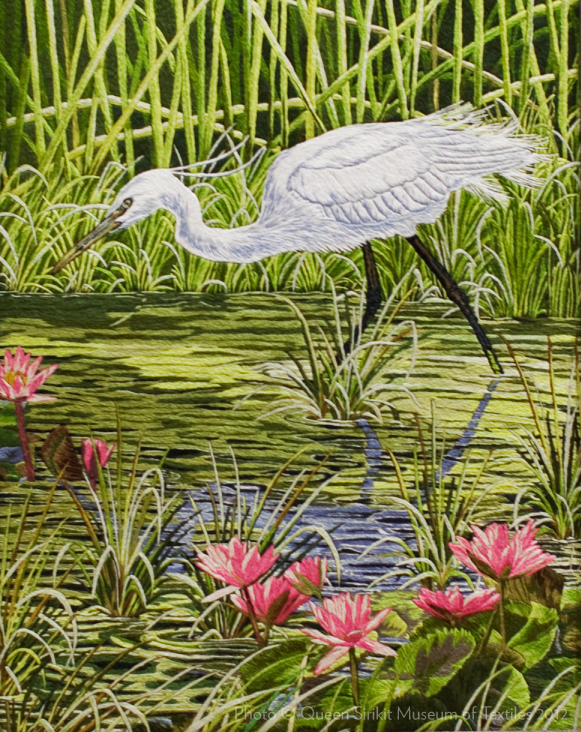
[photo cr. Queen Sirikit Museum of Textiles]
Thai-style embroidery (ผ้าปัก) is a craft that originated in the royal court. In the nineteenth century, the education of high-ranking Thai girls often included instruction in embroidery. Because of this, many ladies of the court, who often came from noble families, were known for their fine needlework. Simple stitches, such as running, zigzag, insert, and curving chain stitches, combine with lavish materials created dazzling textiles. Over time, however, these skills were lost as court fashion became more westernized and the criteria for women’s education changed.
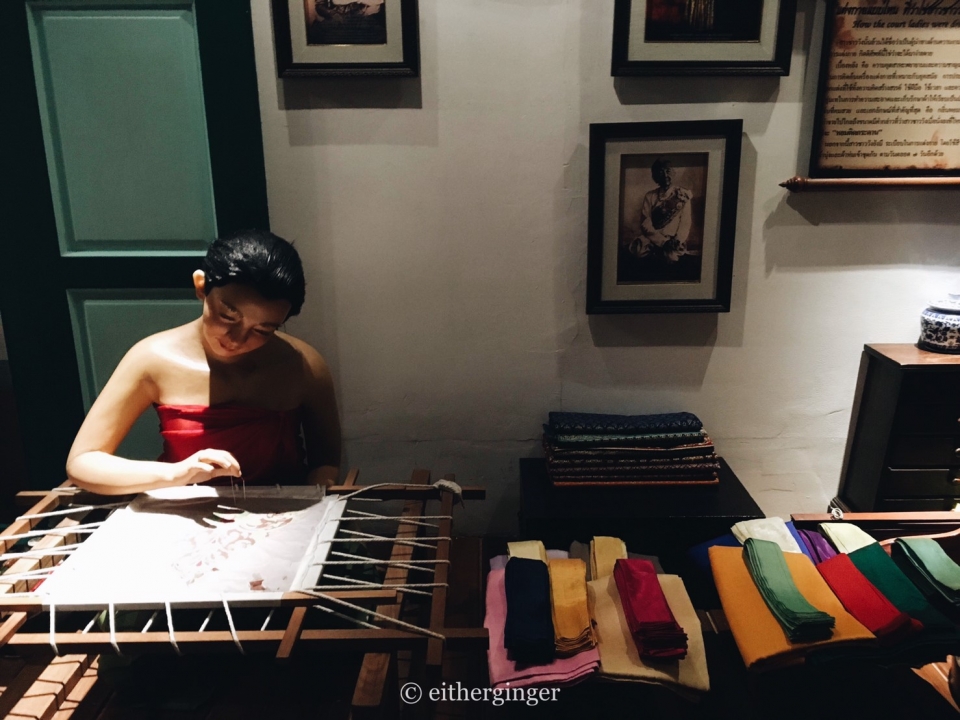
Model of a court lady stitching [photo cr. either ginger]
Revitalization
In the 1970s, Her Majesty Queen Sirikit the Queen Mother (then Queen Consort), whose attendants would sometimes embroider traditional skirts – phaa sin (ผ้าซิ่น) – for Her, decided to revive court-style embroidery. She was motivated by the desire to help Thais in the border provinces of the South. The first embroidery training center opened in 1976 at Thaksin Palace in Southern Thailand; a second was established at Chitralada Valla in Bangkok to educate embroiderers from other Thai regions.
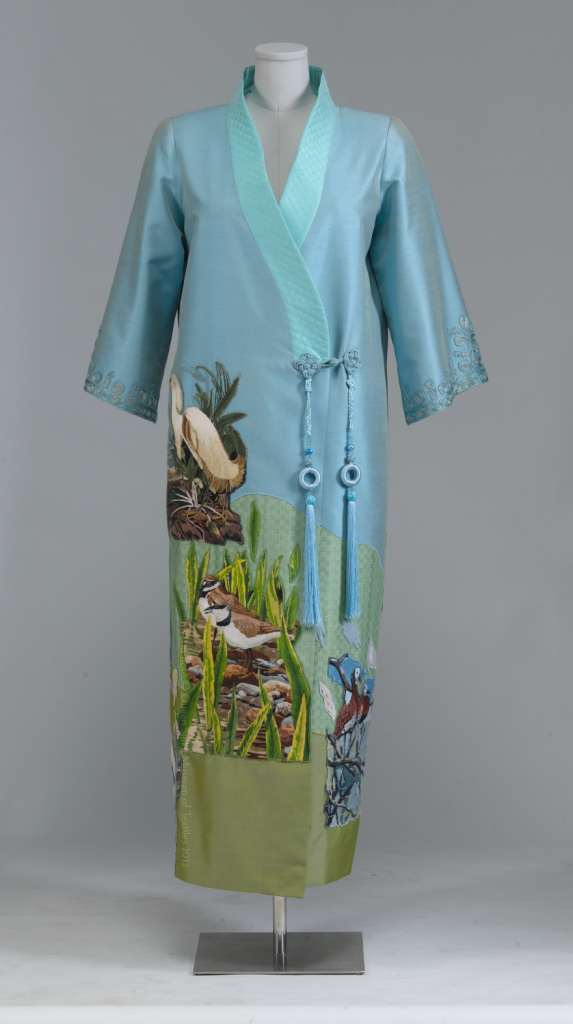 [photo cr. Queen Sirikit Museum of Textiles]
[photo cr. Queen Sirikit Museum of Textiles]
Embroidery Today
Modern Thai pictorial embroidery often depicts subjects from literature or nature, and requires great skill and tremendous attention to detail. Expert embroiderers can create extremely realistic effects by playing on the silk thread’s sheen and careful shading using, for example, as many as five shades of green to delineate a leaf. A large, intricate piece of embroidery can require many embroiderers working full-time for months to execute. The largest embroidery project undertaken to date took more than 120 skilled artists two years to complete. Portraying scenes from Thai history and folklore, this masterpiece was created for an exhibition at the Ananta Samakhom Throne Hall in Bangkok, which commemorated two special occasions: the 60th Anniversary of His Majesty King Bhumibol Adulyadej’s accession to the throne in 2006, and His 80th birthday in 2007.
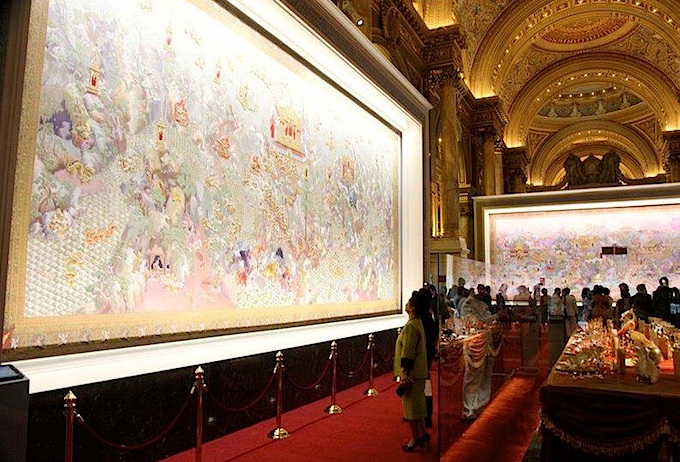
Masterpieces displayed at Ananta Samakhom Throne Hall [bloggang: haiku]
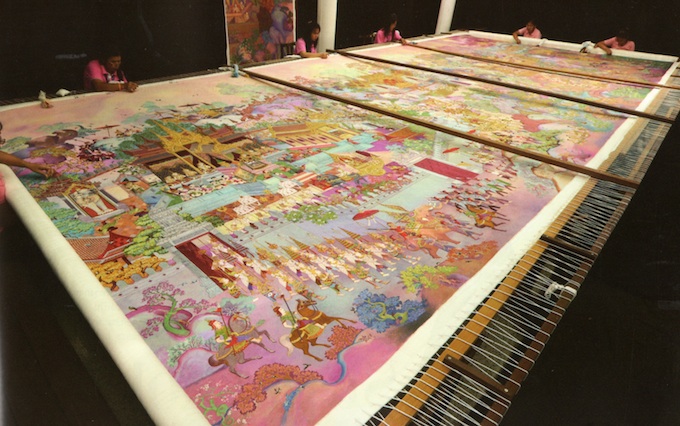
Artists working on the masterpiece project [bloggang: haiku]
*This article was created with special help from the Queen Sirikit Museum of Textiles
Reference:
For the Love of Her People Her Majesty Queen Sirikit Creates the SUPPORT Foundation by the Queen Sirikit Museum of Textiles


